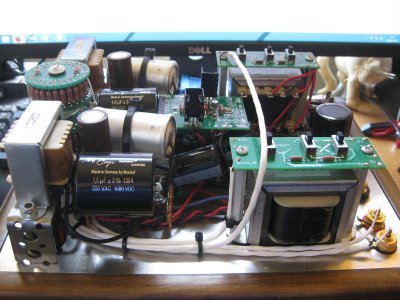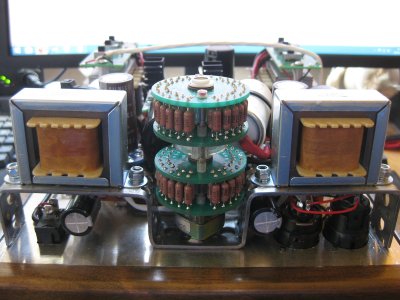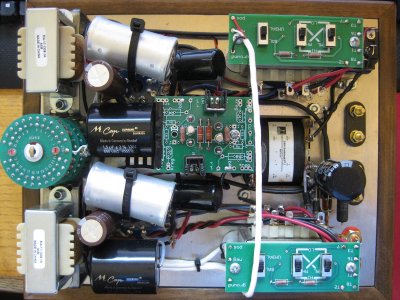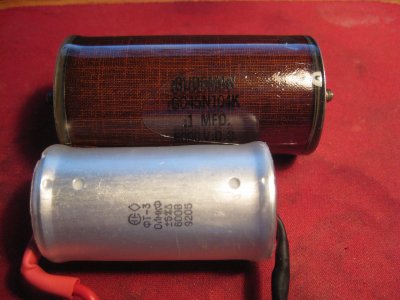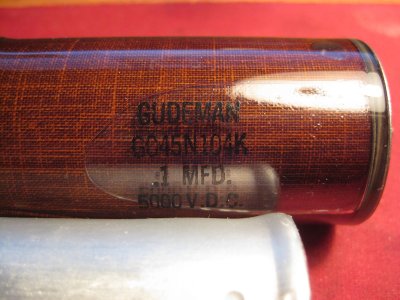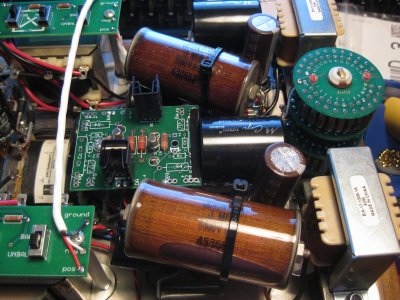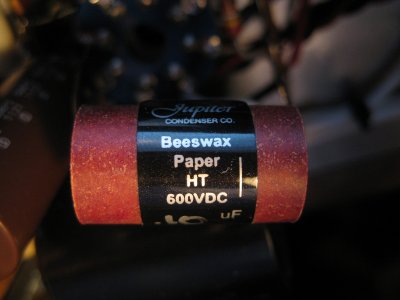A unique blend of the old sound with refinements of the new. New high temp (HT) series replaces the original beeswax/paper design (3rd generation design). Jupiter Condenser HT line of capacitors feature a reinforced beeswax paper dielectric and (with further improved impregnation techniques) is now cased in a non-drip/melt casing and can withstand higher operating temperatures. Perfect for DIY and OEM use where natural sound is demanded.
The "new look" to Jupiter Condenser Co. capacitors, is true to form following function. Not just a new style, the outer casing is still true to natural materials yet offers improved environmental characteristics. A paper tube impregnated with phenolic resin assures excellent moisture resistance along with a resin end fill to lock moisture out. The casing material will not melt or drip even at higher temperatures.
For productions, a computer controlled wax vacuum impregnation system was engineered and built by Jupiter Condenser, and section processing is based on techniques developed by Western Electric and RCA. This is capable of deep vacuum and high pressure, providing consistent impregnation with more gas and moisture removal. New proprietary measures of strengthening dielectric properties have been developed and employed which yield higher insulation resistance and allow greater operating temperatures. Wax and paper construction yields a very well mechanically damped capacitor, free from electrostatic and mechanical ringing.
Specifications:
Tolerance ±5% standard
Rated voltage 600Vdc - Tested at 1200VDC at two stages of production
Pure silver leadouts 20 AWG (0.812mm dia.)
Max temperature +70°C
Beeswax impregnated Paper dielectric
Aluminum Foil electrode material

